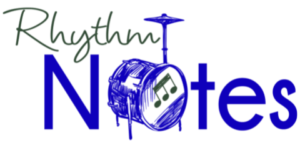Drummers often learn authentic Afro-Cuban rhythms from books and by watching videos, but they don’t always learn to play them the right way. It’s been my experience that drummers are generally hit or miss on playing a pattern like the cáscara rhythm the way it was developed by the great Cuban drummers.
Cáscara is Spanish for shell, and the rhythm is traditionally played on the shell of the timbale. It has a two and three side that match the clave rhythm, but it’s the specific accent patterns for each side of the clave that drummers often fail to perform properly.
The cáscararhythm is from the Cuban rumba and mambo dances, and it carries the same level of importance as the clave. To play it well means that you are laying down the rhythm so it interlocks with all of the other patterns of an Afro-Cuban rhythm section.
Origins of the Cáscara Rhythm
The cáscara rhythm comes from the palito patterns of Afro-Cuban folkloric music. Palito means “little sticks,” and these rhythms are played with sticks on a piece of wood or bamboo called gua-gua.
The examples below show two common palito patterns used in rumba. Pay close attention to the sticking patterns as well as how each rhythm lines up with clave.
Palito Pattern 1

Palito Pattern 2

When the first palito pattern example is played with one hand on the shell of a timbale, it’s close to becoming the cáscara rhythm. All that’s left is the accent pattern.

Cáscara Rhythm Accent Pattern
Casual students of this music often ignore the cáscara accent pattern. As shown in the example below, some accents line up with clave while others do not.

It’s important to be able to differentiate the accented and unaccented strokes. Many drummers practice rudimentary accent pattern exercises to build their technique, leading to more clarity in the performance of dynamic rhythms like cáscara.
Once the accents are distinct, the feel and swing can begin to settle into its half note pulse. This pulse anchors rhythms in Latin music as pushing and pulling the inner beats moves people across the dance floor (see Feeling the Pulse With Cáscara).
Matching the Cáscara Rhythm to Clave
Cáscara has a two side and a three side that correspond to the two and three sides of the clave rhythm. This is the case with both the rumba and son claves.


Related: Clave Rhythm – A Brief History Of A Sacred Popular Rhythm
Some rumberos play the palito pattern by playing the rumba clave in one hand and adding the left to complete the palito example 1 (shown above). Other players use different stockings, but I appreciate the players who outline clave by playing those palito hits with the same hand.
Although not all of the cáscara accents line up with the clave rhythm, every clave hit lines up with cáscara. This can be confusing at first because your hands are playing some accents at the same time and some not.
Feeling the Pulse With Cáscara
The example below includes the hi-hat played on the half note pulse with the foot. It’s accompanying the cáscara rhythm, and this is helpful because it grounds the polyrhythmic layers.

Try this exercise with your foot (or feet) if you don’t have a drum set. You can move your feet to step out with your right foot and in with your left. Then, step out with your left foot and in with your right.
Afro-Cuban rhythms can get very confusing once they start stacking up. Feeling the half note pulse is not only very helpful, but it’s also true to the West African roots of shaker instruments outlining this consistent pulse.
Playing the Cáscara Rhythm on Timbales

Cascara is played on the shell of the macho (high drum) timbale drum. It’s a pattern that must be played with strength and drive, without speeding up.

Timbaleros play the cáscara rhythm in a few different ways, including hembra variations or two-hand variations. The hembra variations are played with fingers on the hembra (low drum), while the two-hand variations are played with the hand not playing the cáscara filling in the spaces on the hembra shell.
Related: How to Play Timbales – Basic Grooves and Fills
The most common hembra variations include two sounds: a muted touch with the fingers on the drum head and an open tone with the fingers. These sounds are produced while holding the timbale stick with only the thumb because the sounds are produced with the middle and ring fingers.
Use the fingers by keeping them slightly curved and play the drum with a wrist turn. The ends of the fingertips strike the drum and either stay to mute or come away from the head to make the tone open.
Hembra Variation 1
The variation below includes finger strokes on the hembra on beats 2 and 4. The first one is muted, so the fingers remain on the drumhead after striking the drum. Beat 4 is an open tone with the finger stroke.

Hembra Variation 2
This hembra variation is like the first one, only this time the open tone and the muted tone are reversed.

Hembra Variation 3
The next two hembra variations shift the stroke on beat 2 over an eighth note. This adds a little emphasis on the upbeat of beat 2 and some more syncopation to the groove.

Hembra Variation 4
Much like Hembra Variation 2, this variation reverses the muted and open tones.

The cáscara will sound like a mess unless the two-handed variations are played clearly. Play the hembra as an unaccented stroke, and make sure the cáscara accents (played on the macho) as shown above are clear.
Two-Handed Variation 1

Some timbaleros add some sixteenth notes anticipating certain strong beats of the clave rhythm. The example below is from Changuito (José Luis Quintana), one of the great timbaleros.
Two-Handed Variations 2

Applying the Cascara Rhythm to Drum Set
The drum set offers a lot of opportunity for application of Afro-Cuban rhythms like cáscara. The timbale and conga rhythms are particularly well suited for drum set.
It’s important to get the hands playing the right rhythms before adding the feet. Some players dive in with good intentions but miss the mark on playing the important elements of the rhythms when adapting them to the drum set.
Related: Son Clave – 10 Ways to Play It on Drum Set
The first example includes the two hands. One hand plays cáscara on the shell of the floor tom, and the other hand plays clave on the snare drum as a cross stick.

Next, it’s time to add the feet. The first example adds the hi-hat with the foot on the downbeat half notes. This simulates the shaker sound, which is explained above (see Feeling the Pulse With Cascara)

The example below includes the kick drum on the upbeat of count two. Some drummers play a kick on count four, but I side with the songo and timba drummers who typically leave it out.

If your group doesn’t have a conga player, you can add the tumbao part to this cáscara groove. It’s a cross stick on the snare drum to simulate the conga slap and the open tones are played with the rack tom.

When you play the conga tumbao, the clave rhythm is missing. I switch to the clave with my foot whenever I’m adding the conga tumbao to the cáscara rhythm drum beat.
Final Thoughts
The secret to playing cáscara is the accent pattern. Get this right, and you’ll be on the right side of authenticity.
Listen to salsa and timba groups on whatever streaming service you use or however you listen to music. Find clave and then try to find the cáscara pattern.
Listening and identifying these rhythms is a crucial part of learning and playing them the right way.


